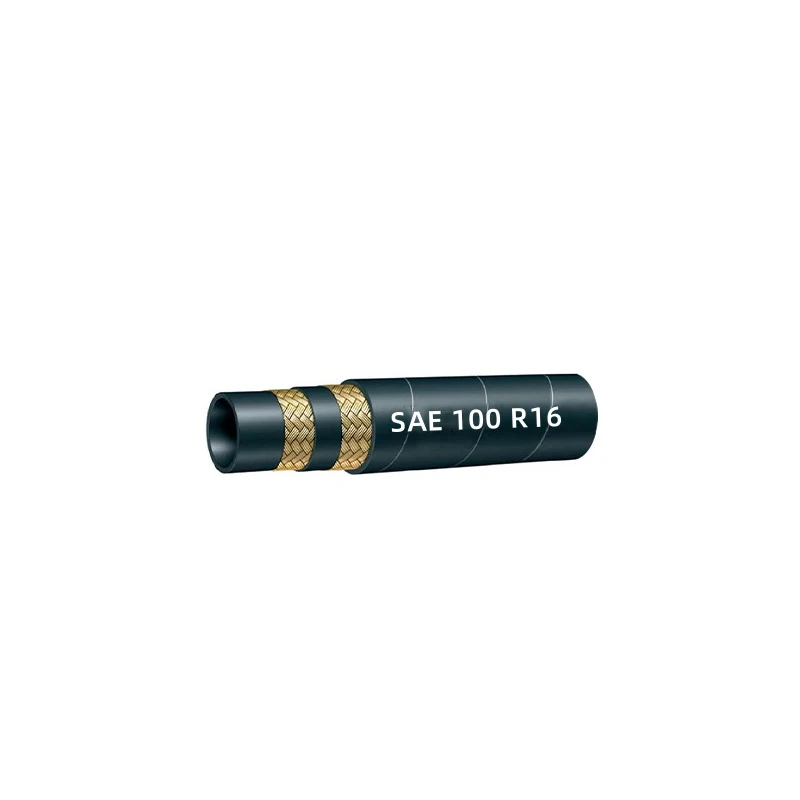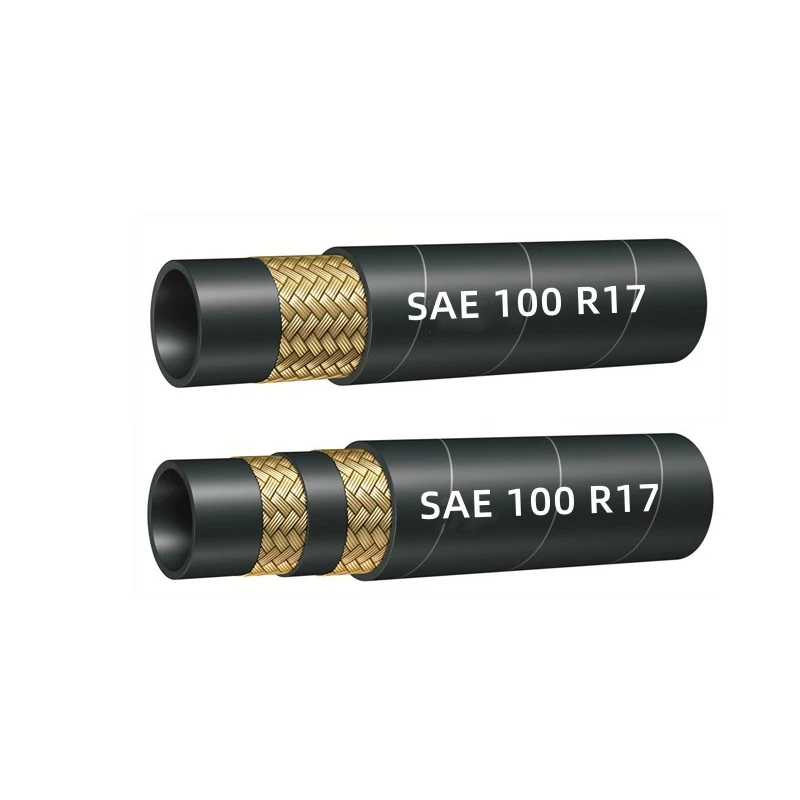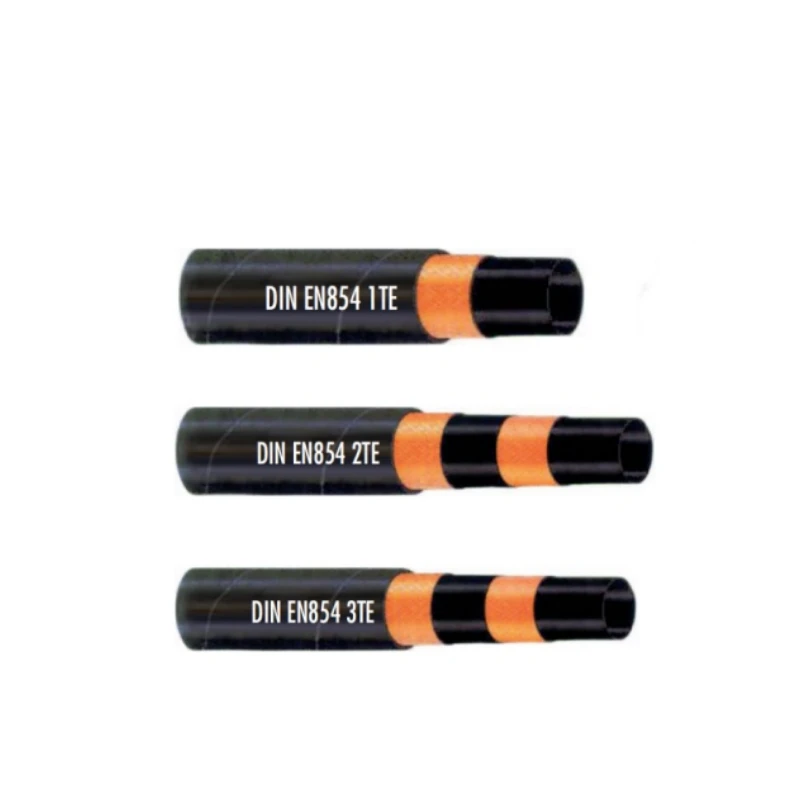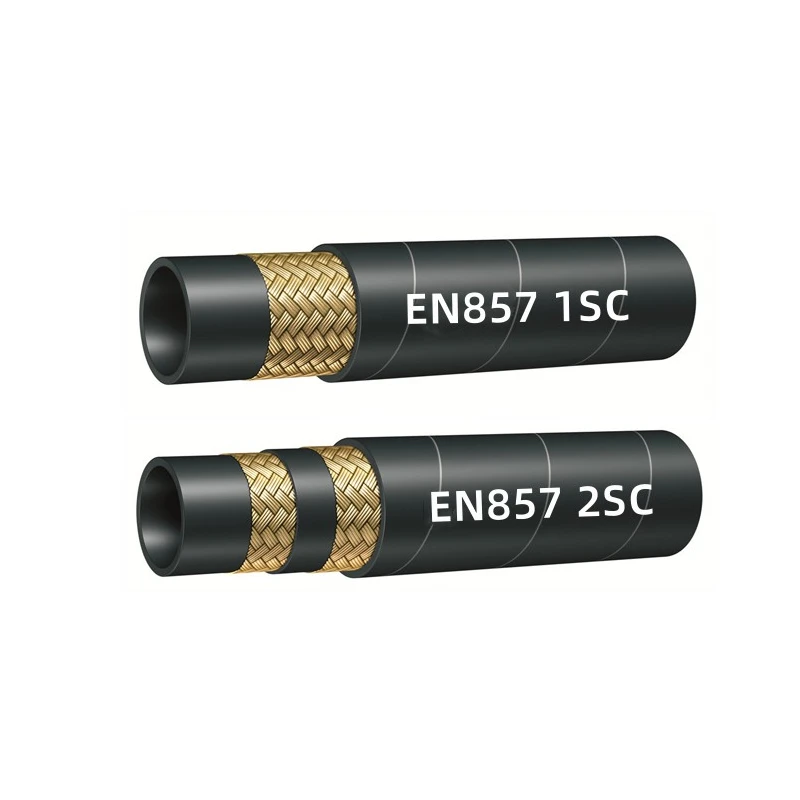Hydraulic Hose
Our high-performance hydraulic hose is engineered to deliver reliable power and fluid transfer in demanding industrial and mobile equipment applications. Constructed with a durable synthetic rubber outer cover, it resists abrasion, weathering, and oil, ensuring long service life even in harsh environments. The hose features a reinforced inner layer made of high-tensile steel wire braid or spiral, providing excellent pressure resistance and flexibility. Designed to operate under high pressure, it supports a wide temperature range and is compatible with various hydraulic fluids, including mineral oils, synthetic oils and biodegradable fluids.
With precision manufacturing and strict quality control, our hydraulic hose offers excellent impulse performance, leak-proof sealing, and consistent flow. It complies with global standards such as SAE, DIN, and ISO, ensuring compatibility and safety across applications. Ideal for construction machinery, agricultural equipment, mining, and industrial systems, this hose enhances operational efficiency and minimizes downtime. Custom lengths, fittings and protective sheaths are available to meet specific requirements.
-

Compact High-pressure One-layer and Two Layers Steel Wire Reinforced Hydraulic Hose SAE 100 R16
-

Compact 21Mpa Working Pressure Layer or Two Layers Steel Wire Reinforced Hydraulic Hose SAE 100 R17
-

Textile Yarn Braid Reinforced Hydraulic Hose EN854 1TE/2TE/3TE
-

Extra High Pressure Four Layers Steel Wire Spiral Reinforced Hydraulic Hose EN856 4SP / EN856 4SH
-

Compact One Layer and Two Layers Steel Wire Reinforced Hydraulic Hose EN857 1SC / EN857 2SC
What Are Hydraulic Hoses Used For
Hydraulic hoses are used to transmit hydraulic fluid between components in a hydraulic system, enabling the transfer of power for various mechanical operations. They are essential in industries such as construction, agriculture, manufacturing, mining, and transportation. These flexible, high-pressure hoses connect pumps, valves, cylinders, and other components to move fluid under pressure, allowing machines to lift, push, rotate or perform precise movements.
Common applications include excavators, loaders, tractors, forklifts and hydraulic presses. Hydraulic hoses are designed to withstand high pressure, extreme temperatures and harsh working conditions. They are made with reinforced layers and durable materials to ensure reliability and safety during operation. Additionally, they help absorb vibration and reduce noise in the system.
In mobile and industrial machinery, hydraulic hoses play a crucial role in maintaining system efficiency and performance. Without them, many modern machines would be unable to function. Whether in heavy-duty equipment or automated production lines, hydraulic hoses ensure smooth, controlled and powerful movement, making them vital to countless applications across industries.
Hydraulic Hose Applications
Hydraulic hoses are used in a wide range of applications where fluid power is essential for mechanical operation. They are commonly found in construction equipment such as excavators, bulldozers and cranes, where they transmit high-pressure hydraulic fluid to actuate cylinders and motors. In agriculture, hydraulic hoses power tractors, harvesters, and sprayers, enabling precise control and efficient performance.
In the industrial sector, they are used in manufacturing machinery, hydraulic presses, injection molding systems, and material handling equipment. Hydraulic hoses are also essential in mining operations, marine equipment, oil and gas rigs, and aviation ground support systems, where durability and reliability are critical under extreme conditions.
These hoses are designed to operate in tight spaces and flexible routing configurations, making them ideal for mobile equipment and dynamic systems. They withstand high pressure, temperature variations and exposure to oils, chemicals and abrasion. Whether it's lifting, steering, braking or powering attachments, hydraulic hoses ensure safe and efficient energy transfer. Their versatility and strength make them indispensable in modern hydraulic systems across diverse industries.




